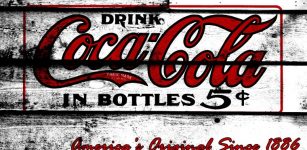The Use Of Surnames Started During The Middle Ages In England
AncientPages.com - Today we all have last names, also called surnames, but how and when did we start using last names? History tells us the custom started in Medieval England in the year 1066.
In the early years of the Middle Ages, most people in Europe lived in small farming villages. Since everyone knew his or her neighbors, and there was little need for last names. This changed however when the population expanded and the towns grew. Suddenly, there was a need to find ways to differentiate between two people who shared the same first name.
Prior to the introduction of surnames in England in 1066, everyone had just one name. Surnames had many different sources, but they can be roughly grouped into four categories: patronymic, locative, occupational or status, and nicknames. Common adjectives often referred to size, such as Little, Short, or Longor to hair color or complexion such as White, Black, or Red (which evolved into Reed). Sometimes, an adjective was combined with a noun to form a byname, like Longfellow or Blackbeard.
A person with a nickname could for example be called Robert Red (symbolic of his hair color). If Robert lost his hair, people would call him Rabert Bald.
See also: Law Of The Innocents
Patronymic names identified people as their fathers' children. Locative surnames identified people based upon where they were born, live or work or the land they own. Occupational or status names were also common. They identified people based upon their jobs or social status. Thomas Smith would have been the Thomas in the village who was the blacksmith. Robert Knight might have chosen his surname to reflect his social standing as a knight.
Because the British were among the first Europeans to settle in North America, many modern American surnames can be traced back to medieval England, Scotland, Ireland, and Wales.
AncientPages.com
Expand for referencesMore From Ancient Pages
-
 Amazon Forest Communities Disappeared Long Before 1492 Arrival Of Europeans
Archaeology | Jun 19, 2019
Amazon Forest Communities Disappeared Long Before 1492 Arrival Of Europeans
Archaeology | Jun 19, 2019 -
 Antediluvian Discoveries In Britain, Germany And France That Could Re-Write History
Ancient Mysteries | Jan 4, 2019
Antediluvian Discoveries In Britain, Germany And France That Could Re-Write History
Ancient Mysteries | Jan 4, 2019 -
 Amazing 2,000-Year-Old Engraved Roman Gems Discovered Near Hadrian’s Wall
Archaeology | Jan 30, 2023
Amazing 2,000-Year-Old Engraved Roman Gems Discovered Near Hadrian’s Wall
Archaeology | Jan 30, 2023 -
 The Strange Story Of The Grave Of Copernicus
Featured Stories | Jan 5, 2024
The Strange Story Of The Grave Of Copernicus
Featured Stories | Jan 5, 2024 -
 Eridu: Pre-Flood City That Belonged To Enki, God Of Creation, Intelligence, Wisdom And Magic
Civilizations | Mar 27, 2017
Eridu: Pre-Flood City That Belonged To Enki, God Of Creation, Intelligence, Wisdom And Magic
Civilizations | Mar 27, 2017 -
 The Man Who Took The Greatest Alchemy Secret Of All Time To His Grave
Ancient Mysteries | Jul 16, 2020
The Man Who Took The Greatest Alchemy Secret Of All Time To His Grave
Ancient Mysteries | Jul 16, 2020 -
 Ancient DNA Reveals Surprises About Life Of Early Africans
Archaeology | Feb 24, 2022
Ancient DNA Reveals Surprises About Life Of Early Africans
Archaeology | Feb 24, 2022 -
 Secrets Of Egyptian Painters Revealed By Chemistry
Archaeology | Jul 13, 2023
Secrets Of Egyptian Painters Revealed By Chemistry
Archaeology | Jul 13, 2023 -
 Chartres – Symbol Of Power And Secret Ancient Knowledge
Ancient Symbols | Nov 28, 2018
Chartres – Symbol Of Power And Secret Ancient Knowledge
Ancient Symbols | Nov 28, 2018 -
 12,000-Year-Old Ice Age Stone Tools Found – Earliest Dated Evidence For Human Activity in Scotland
Archaeology | Oct 10, 2015
12,000-Year-Old Ice Age Stone Tools Found – Earliest Dated Evidence For Human Activity in Scotland
Archaeology | Oct 10, 2015 -
 Baffling Archaeological Find At George Washington’s Mount Vernon
Archaeology | Jun 20, 2024
Baffling Archaeological Find At George Washington’s Mount Vernon
Archaeology | Jun 20, 2024 -
 1,500-Year-Old Roman Settlement Destroyed By The Goths Discovered In Bulgaria
Archaeology | Mar 21, 2025
1,500-Year-Old Roman Settlement Destroyed By The Goths Discovered In Bulgaria
Archaeology | Mar 21, 2025 -
 Archaeologists Survey Bronze Age Konar Sandal Site In Southeast Iran
Archaeology | Feb 17, 2021
Archaeologists Survey Bronze Age Konar Sandal Site In Southeast Iran
Archaeology | Feb 17, 2021 -
 Unusual Archaeological Object Reveals Traces Of Prehistoric Settlements Mikołajki
Archaeology | Jun 19, 2023
Unusual Archaeological Object Reveals Traces Of Prehistoric Settlements Mikołajki
Archaeology | Jun 19, 2023 -
 Secrets Of Ninja Swords – Favorite Weapon Of The Shinobi
Featured Stories | Aug 13, 2018
Secrets Of Ninja Swords – Favorite Weapon Of The Shinobi
Featured Stories | Aug 13, 2018 -
 New Pyramid Discovered In The Sacred City Of Caral – Home To South America’s Oldest Civilization
Archaeology | Feb 10, 2025
New Pyramid Discovered In The Sacred City Of Caral – Home To South America’s Oldest Civilization
Archaeology | Feb 10, 2025 -
 Major Earthquake Struck The Atacama Desert 3,800 Years Ago, Forcing Hunter-Gatherers To Move Inland
Archaeology | Apr 7, 2022
Major Earthquake Struck The Atacama Desert 3,800 Years Ago, Forcing Hunter-Gatherers To Move Inland
Archaeology | Apr 7, 2022 -
 Beware Of The Night Marchers – Deadly Ghosts Of Warriors Who Kill With Just One Look
Featured Stories | Jul 23, 2019
Beware Of The Night Marchers – Deadly Ghosts Of Warriors Who Kill With Just One Look
Featured Stories | Jul 23, 2019 -
 The Caesar Cipher: Ancient And Simple Yet Effective Cipher Used By Julius Caesar
Ancient History Facts | May 30, 2018
The Caesar Cipher: Ancient And Simple Yet Effective Cipher Used By Julius Caesar
Ancient History Facts | May 30, 2018 -
 Coca-Cola Was Invented As A Cure For Headache And Hangover In The 1880s
Ancient History Facts | Oct 23, 2017
Coca-Cola Was Invented As A Cure For Headache And Hangover In The 1880s
Ancient History Facts | Oct 23, 2017

